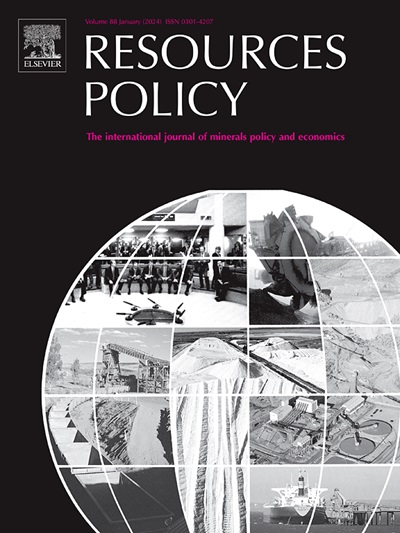Green and traditional productivity growth with natural capital: The role of resource depletion, environmental damages and sectoral composition
IF 10.2
2区 经济学
0 ENVIRONMENTAL STUDIES
引用次数: 0
Abstract
This study estimates traditional and green productivity growth, including natural capital as an input. The key novelty is the use of an alternative output measure (instead of GDP) that accounts for the depreciation of produced capital, depletion of natural resources, and environmental damages to estimate green productivity growth. The study also examines the effects of disregarding capital losses and ecological damages and the role of sectoral composition in differences between the two productivity measures. In doing so, we apply the translog-stochastic production frontier models in a panel of 100 countries from 1999 to 2018. Among our sample countries, only 46 percent had good compliance with the sustainability path; and the average share of capital losses and environmental damages in actual GDP is about 18 percent. Our findings also indicate a decline in global and regional average green productivity growth over the study period. Ignoring the loss of capital stocks and environmental costs of the economy tends to overestimate traditional productivity growth by 0.8–1.6 percent. Sectoral composition plays a crucial role, as tertiarization closes the gap between traditional and green productivity growth while industrialization widens the gap. Overall, countries should actively foster green practices, technologies, and policies to improve green productivity.
利用自然资本实现绿色和传统生产力增长:资源枯竭、环境损害和部门构成的作用
本研究估计了传统和绿色生产力的增长,包括作为投入的自然资本。关键的新颖之处在于,使用了一种替代的产出指标(而不是GDP),该指标考虑了生产资本的折旧、自然资源的消耗和环境损害,以估计绿色生产率增长。该研究还审查了忽视资本损失和生态损害的影响,以及部门构成在两种生产率措施之间差异中的作用。为此,我们在1999年至2018年的100个国家的面板中应用了超对数随机生产前沿模型。在我们的样本国家中,只有46%的国家很好地遵守了可持续发展道路;资本损失和环境破坏占实际GDP的平均份额约为18%。我们的研究结果还表明,在研究期间,全球和区域平均绿色生产率增长有所下降。忽略资本存量的损失和经济的环境成本往往会高估传统的生产率增长0.8 - 1.6%。部门构成起着至关重要的作用,因为第三化缩小了传统和绿色生产力增长之间的差距,而工业化则扩大了这一差距。总体而言,各国应积极促进绿色实践、技术和政策,以提高绿色生产力。
本文章由计算机程序翻译,如有差异,请以英文原文为准。
求助全文
约1分钟内获得全文
求助全文
来源期刊

Resources Policy
ENVIRONMENTAL STUDIES-
CiteScore
13.40
自引率
23.50%
发文量
602
审稿时长
69 days
期刊介绍:
Resources Policy is an international journal focused on the economics and policy aspects of mineral and fossil fuel extraction, production, and utilization. It targets individuals in academia, government, and industry. The journal seeks original research submissions analyzing public policy, economics, social science, geography, and finance in the fields of mining, non-fuel minerals, energy minerals, fossil fuels, and metals. Mineral economics topics covered include mineral market analysis, price analysis, project evaluation, mining and sustainable development, mineral resource rents, resource curse, mineral wealth and corruption, mineral taxation and regulation, strategic minerals and their supply, and the impact of mineral development on local communities and indigenous populations. The journal specifically excludes papers with agriculture, forestry, or fisheries as their primary focus.
 求助内容:
求助内容: 应助结果提醒方式:
应助结果提醒方式:


